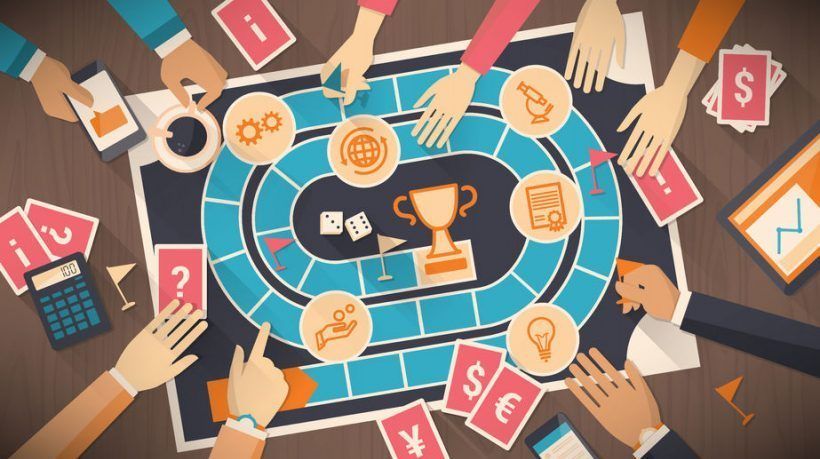What Helps—And What Hurts—Learning Outcomes
For many of us, learning in project management is just not the phrase that conjures images of thrilling, nail-biting adventure and big plot twists at the end of the story. It's typically a world of Gantt charts, n-number of meetings, and never-endingly marching towards a deadline. What if learning felt more like playing a game than sitting through a lecture? Imagine turning every sprint into a hands-on lab, every team update into an analytical report, and hitting a deadline into achieving a course completion certificate. By adding game mechanics to project management courses and learning strategies, we can transform a traditionally dry subject into something dynamic, engaging, and fun. That being said, welcome to the world of gamifying project management.
What Is Gamifying Project Management?
True to its nature, gamification is the application of game-design elements and principles in nongame contexts. When applied with project management online courses, it means strategically utilizing game-like elements like points, timers, instructions, challenges, and narratives to make your project tasks more engaging and motivating your team members. Ultimately, this can drive better project outcomes.
Mastering project management, especially with gamification knowledge, can be a significant career boost for you. As per the latest report of the World Economic Forum, learning in project management is among the top ten skills in 2025. By 2027, the employment rate of project managers is expected to increase by 33%, boosting over 22 million jobs worldwide.
How Does Gamification Help Projects And Project Managers?
What if I tell you, the benefits of a gamified education strategy in project management courses can be profound, touching every corner of the project lifecycle?
Enhancing Engagement And Motivation
This is the immediate and most obvious advantage. When you frame the tasks as challenges, it stirs more competitiveness in the team, keeping them more focused and invested than ever before. Points and badges boost instant recognition, fostering a sense of achievement even for smaller milestones, which can be highly motivating for the team.
Increases Collaboration And Team Cohesion
Most of the gamified elements, such as team challenges, analytics, and a dashboard, naturally boost team collaboration. If a team tends to earn collective points for solving any complex bug, code, or query and delivering a task before its due date, it tends to foster the "we're in this together" mindset.
Improved Productivity And Efficiency
Whenever the tasks are divided into achievable quests with clear rewards, many individuals are more efficient. The strong urge to get good points and climb up the leadership board can push people to be more productive with their tasks. This is where gamification steps in, as it highlights the particular area where any team member might require support.
Fostering Skill Development And Learning
Imagine being in a skills tree, where completing any task or a specific skill earns you the points that you require to unlock the latest project.
Increasing Transparency And Visibility
The leaderboards and visual progress indicators make the project status clear to everyone. Any team member can see how much a team member has contributed to the project, which gives a clear picture to the project manager as well.
What Works When Gamifying
Simply implementing gamification is not a one-size-fits-all solution. Success hinges on thoughtful designs and the understanding of human psychology.
Clear Goals And Rules
Just like any other game, every participant must understand what they are trying to achieve, how to earn points and rewards, and what the rules are. Remember, ambiguity typically leads to frustration, not engagement.
Meaningful Rewards And Recognition
There are certain types of tangible rewards which include gift cards and extra time being off. Intangible rewards include public recognition, or hall of fame, or choosing the next team lunch spot. However, the overall point is that the they must feel valued, because recognition tends to be more powerful than monetary rewards.
Progress Indicators
There is no doubt that we humans love to see progress, especially visual bars, level ups, badge collections; these reinforce the efforts that are paying off and motivate continued participation.
Immediate Feedback
Games tend to provide instant feedback on actions. Learning in project management means quickly updating the points, awarding badges, or acknowledging completed tasks. That is why delayed feedback diminishes the impact.
What Doesn't Work: Pitfalls You Must Avoid
Just as there are best practices, there also happen to be common missteps that can simply derail your gamification efforts:
Making It Too Complex
If the game mechanics are more complex than the project itself, then you've failed already. The key is to keep it simple and intuitive.
Forgetting Team Culture
What might work for a highly competitive sales team might not work for the creative design team. This happens due to not understanding the team's preferences and dynamics.
Focusing Only On points
A points system without any meaning can be quickly abandoned. It's the why behind the points that seems to matter: the achievements, recognition, and progress.
Building Up Unnecessary Competition
If only a few top performers consistently win, then others might disengage. One can design challenges that allow everyone a chance to succeed, perhaps by simply focusing on different types of metrics.
Lack Of A Long-Term Vision
Gamification is not something that should be on one-off trick. It needs to be integrated into the project's ongoing rhythm to sustain engagement.
Concluding Thoughts
Gamifying project management course is not just a fleeting trend; it is more of a fundamental application of human psychology. As humans, we are wired for challenges, for progress, for recognition, and connection. By simply tapping into these innate desires, many project managers can transform their daunting tasks into engaging quests and create an even more dynamic, motivated, and successful project environment. So, the next time you are looking down at a complex project plan, ask yourself this question: how can I turn this into a game that is worth playing? Your team and your deliverables might thank you for it.
FAQ
Here are some negative aspects of gamification:
- Potential for overemphasis on competition
- Risk of diminishing intrinsic motivation
- Challenges in proper implementation
- Accessibility and equality concerns
- Oversimplification of complex subjects
One of the best ways to describe gamification is the procedure of applying game design concepts and game mechanics to an activity or a goal. In other words, gamification is the use of games in nongame contexts such as businesses and education.
Gamifying tasks can help to transform even the most boring work into an engaging and rewarding procedure. By simply introducing a clear version of the mission, tracking down accomplishments, and increasing your ownership, one can easily tap into the same mechanisms that make video games fun.







